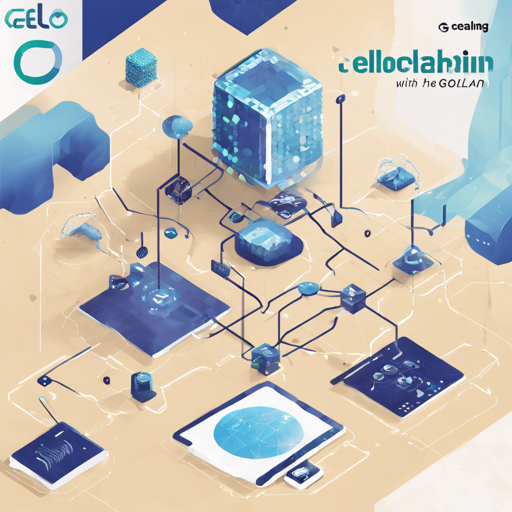The Celo Blockchain provides a robust framework for developing and managing decentralized applications using the Golang programming language. Built off the foundation of the Ethereum protocol, Celo aims to bring financial services to everyone via mobile technology. In this blog post, we’ll guide you through the steps to set up and run your own Celo blockchain client, troubleshoot any issues you might encounter, and understand the powerful functionalities at your disposal.
How to Build the Celo Blockchain from Source
Before we dive into the setup process, it’s essential to have Go (minimum version 1.19) and a C compiler available on your system. Here are the steps to build the Celo client:
- Install Go and a C compiler using your package manager.
- Run make geth to build the client or make all for the full suite of utilities.
Mobile Client Commands
If you’re looking to build mobile clients, specific commands are available:
- Run make ios for iOS clients.
- Run make android to build the Android client. Keep in mind this command also applies a git patch for necessary library swaps.
Understanding Executables
When you’re working with the Celo blockchain client, it comes equipped with several executables, each serving different functionalities:
- geth: The main Celo Blockchain client. Think of it as the central hub, allowing you to connect and communicate with the Celo network.
- abigen: This acts as a translator, converting contract definitions into user-friendly Go packages. Imagine it like a bilingual guide, simplifying communication.
- bootnode: Similar to a light tourist guide, it helps in discovering peers without delving into the deeper functionalities of the network.
- evm: This is the developer’s playground, letting you run bytecode snippets for isolated debugging, just like a sandbox for experiments.
- gethrpctest: A tool to ensure the client adheres to the Ethereum JSON RPC standards.
- rlpdump: Converts encoded data back into a readable format, akin to translating cryptic notes into clear instructions.
Running Tests
Before executing tests, it is crucial to prepare the environment. Start with make prepare to ensure everything is in place.
Common Troubleshooting Issues
While building and running the Celo Blockchain, you might encounter some hurdles. Here’s how to navigate through common issues:
- If you face errors related to dependencies, ensure all required packages are installed correctly.
- For compilation issues, verify that your Go version meets the minimum requirement and that no other processes are using the libraries.
- If your node fails to connect, check the configuration settings and ensure you’re using the correct network flags.
If you’re still having trouble, for more insights, updates, or to collaborate on AI development projects, stay connected with fxis.ai.
Running Your Own Celo Node
Now that you’re set up, it’s time to launch a Celo node! You can use the following commands to run your node on different networks:
- To connect to the main Celo network, simply execute:
$ geth console$ geth --alfajores console$ geth --baklava consoleAdditionally, you can pass configuration files for more complex setups:
$ geth --config pathtoyour_config.tomlContribution and Collaboration
Your involvement in enhancing the Celo Blockchain is highly encouraged! If you find a bug or want to submit an improvement, you can easily open a GitHub issue and allow the community to assist.
Final Thoughts
At fxis.ai, we believe that such advancements are crucial for the future of AI, as they enable more comprehensive and effective solutions. Our team is continually exploring new methodologies to push the envelope in artificial intelligence, ensuring that our clients benefit from the latest technological innovations.
With this guide, you’re well on your way to diving into the world of Celo Blockchain. Embrace the journey as you build and explore the endless possibilities that await!

